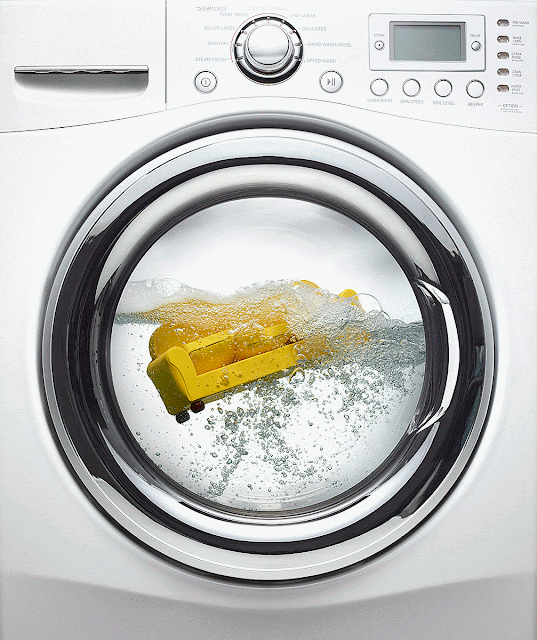Mechanical system and its elements
- Mechanical systems are the important basic building blocks of the mechatronic systems.
- From the modeling schematic and from the point of view of the law of conservation of energy, distinguishably three basic modeling elements are earmarked for the mechanical systems. They are Spring, Damper, and Mass/Inertia.
- The fundamental comes from the fact that any kind of mechanical system has spring property, i.e. when force is applied it elongates and the energy is stored within the system.
- It also has damping property, i.e. when force has applied some portion of the force (energy) is lost.
- Finally, it has mass or inertia (when it rotates it exhibits inertia) property that determines how much acceleration it would produce when exerted by the force.
Irrespective of whether it is a mechanical, electrical, fluid, or thermal system, they can be depicted with these three types of pure elements that are collectively responsible for governing the principle of conservation of energy.
- These three elements are fundamental because each element characterizes three types of energies, which are encountered within the systems.
- The spring element stores potential energy,
- The damper represents the dissipating energy or loss in the system, and
- The inertia element stores kinetic energy.
- Sometimes, one of these storing phenomena predominates over the others. Then only one of these elements might be sufficient for modeling such a system.
- In other instances, two or all three phenomena must be taken into consideration, and in some systems, several elements are combined together in order to form the model of the system.
Spring Element
- Spring element stores potential energy. The law that spring is being described with regard to the storage of potential energy is based on Hooke's law.
- If a force, F (Newton: kg×m/s2), is applied on the spring as shown in Figure 1, then the spring elongates and the amount of elongation is proportional to the applied force.
- The mathematical model equation that describes the basic modeling element is called the elemental equation.
- F = kx or x = F/k ..... Equation 1
- Equation 1 is called the elemental equation of the spring element.
- Where, F is the applied force or more appropriately the force exerted by the spring element, x is the change in length or displacement (Meter) caused by force and k is a proportionality factor called spring constant or stiffness.
- This implies that if the input to a spring element is force, then the output is displacement.
- The spring element is sometimes referred to as the stiffness element. Stiffness is a kind of transfer function.
- The value of output depends on the transfer function.
- The relationship between the input force and output displacement for spring depends on the geometry and property of the material. The unit of stiffness is Newton/meter.
- The reciprocal of the stiffness is called mechanical capacitance or compliance.
Figure 1: Translational spring
- The spring element we considered is a translational spring in the sense that the input is a force and not torque.
- Torque is the tendency of a force to rotate an object about an axis, fulcrum or pivot
- If a torque, T (N-m) is applied on the rotational spring, then the spring makes angular displacement θ.
- T = ka×θ or θ = T/ ka .... Equation 2
- Equation 2 is called the elemental equation of the rotational spring element.
Where, T = the applied torque, θ = angular displacement caused by the torque applied and ka = rotational stiffness (N-m/radian)
Figure 2: Rotational Spring
Damper or dashpot element
- Within the system loss is inevitable. Energy Loss = Input energy - output energy.
- In order to follow up on the principle of conservation of energy, a loss element should exist in order to describe the system completely, i.e. the energy must be balanced.
- Indeed, the loss is reflected through the damper element.
- The damper element does not store any energy. It consumes energy, which cannot be recovered.
- Another name of the damper is a dashpot that symbolizes resistance, more appropriately mechanical resistance.
- Like springs, two types of dampers such as translational dampers and rotational dampers are defined. Translational dampers and rotational dampers are essentially related to translational movement and rotational movement, respectively.
- The loss is related to the velocity. In the translational damper element, the relationship between the input force and velocity is linear as expressed in Equation 1. This equation is also called elemental equation for the translational damper:
- F = Rt × v ....... Equation 1
- Where, F = applied force, Rt = damping constant (N-s/m), v = velocity
- The elemental equation for the rotational damper:
- T = Rr × w ...... Equation 2
- Where T = applied torque, Rr = rotational damping constant(N-m/s) and w = angular velocity
Figure 3 Rotational damper
Mass/Inertia
The third element represented in mechanical systems is Mass (translational motion) or Inertia (in case of rotational motion) and follows the Newtons 2nd law of motion.
Newton's second law states that the acceleration (a) of an object is directly related to the net force (F) and inversely related to its mass(m).
The elemental equation for linear acceleration is:
a = F/m ....(i)
The elemental equation for rotational or angular acceleration is:
dw/dt = T / J ... (ii)
where dw/dt = angular acceleration, J = inertia and T = Torque







Comments
Post a Comment